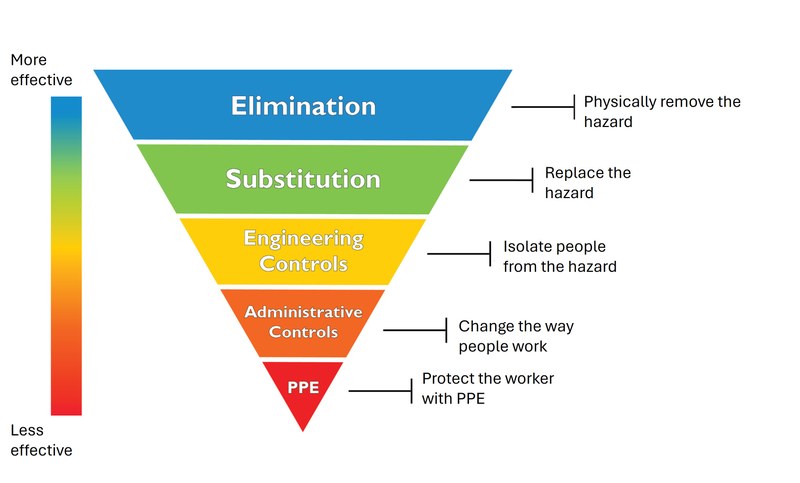Creating a new risk assessment
If you do have to create a new risk assessment from scratch, how you approach this may vary considerably depending on how specialised the activity is. Below is a useful basic guide to approaching general laboratory work that requires risk assessment. It assumes that you have already determined that a suitable risk assessment does not currently exist in RiskNet and the work does not require specialised assessment.
- The first step in a new risk assessment for a completely new process should be to draft a very basic procedure; write a step-by-step guide in bullet points describing the process, for example for a lab experiment which instruments/apparatus are involved and how they will be used, etc
- Next think about the hazards that may be present, and how likely something might go wrong and lead to harm, and record this for each step. It is useful at this stage to consult any safety documentation available e.g., from equipment manufacturers.
- Then consider the environment the work will take place in- not only the location, but also who else may be working in the area. Review your assessment of the hazards for each step based on this information- how does it affect their severity and how likely they are to cause harm, not only to you but also to others nearby?
- The next step is to determine your controls. You may find, after consideration, that you can eliminate some hazards just by changing your procedure or moving to a more suitable workspace. A very good rule of thumb is the ‘hierarchy of controls’

- Finally, review your draft process with the assistance of your supervisor/line manager, or the lab manager (as appropriate) before transferring to RiskNet for formal review.
It is much easier to edit and review the information in a risk assessment this way, as your draft document can be more easily shared and edited than a RiskNet form.